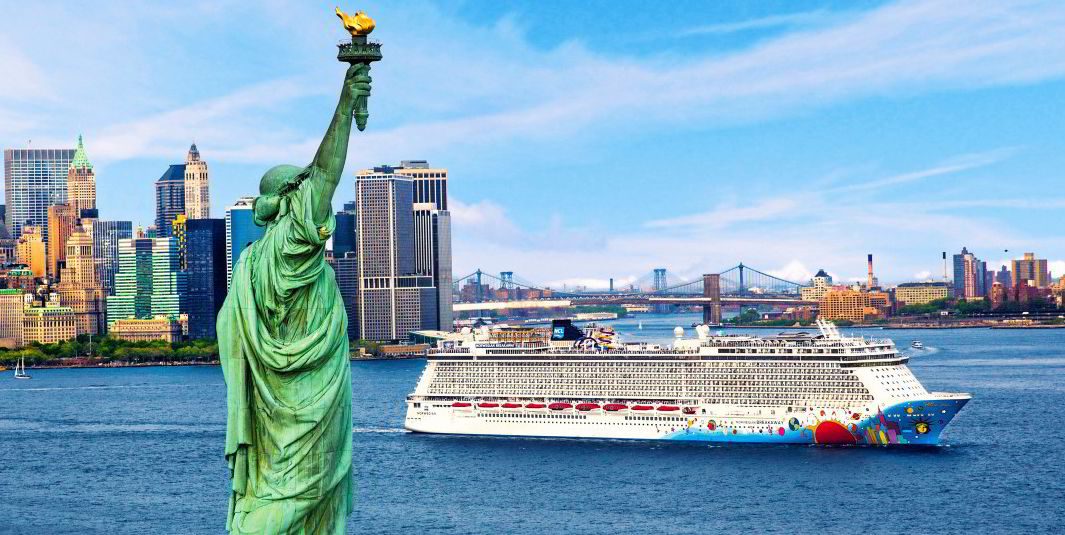In the fight to cut ship emissions, the International Maritime Organization’s mandatory Carbon Intensity Indicator (CII) is likely to have unforeseen effects, particularly on cruiseships.
Under the CII, ships are given a rating of A to E based on their annual carbon dioxide emissions and distance travelled. Ratings of A to C are acceptable, but if a ship receives D or E, a corrective plan needs to be developed and approved to get it up to at least a C.
The CII is planned to be in force for all ships above 5,000 gt in 2023, but rating thresholds are expected to get continually more stringent towards 2030.
The CII formula is worked out by taking a ship’s annual CO2 emissions in grams and dividing that by its tonnage multiplied by annual distance travelled in nautical miles.
Gross tonnage is used for cruiseships, deadweight for cargoships. This makes sense, as cargo ships need to transport freight. But it can be very different for cruiseships, which do not need to do transportation work.
In a seeming paradox, achieving a better CII rating can lead cruiseships to increase fuel consumption and so CO2 emissions.
Why is this the case?
Consumption of fuel per nautical mile is directly proportional to the CII rating. Due to the high portion of on-board power load from hotel services — the amount of energy used for non-propulsion — cruiseships have a typical optimal speed of around 12 knots for the consumption of fuel per nautical mile under the CII.

The optimum speed issue does not apply to cargo ships — it is close to zero — because they have a very small hotel load. Cruiseships can have a hotel load of 7 MW in port and 10 MW at sea, which means at low speed or in port, their energy consumption is huge compared with cargo ships.
So, cruiseships' optimum speed will reduce as they require a higher propulsion power demand, due to issues such as hull fouling. And with higher hotel loads, they are pushed towards higher speeds to minimise the tonne-mile effect.
Although always sailing at 12 knots should achieve the best possible CII for a 100,000-gt cruiseship burning marine gasoil, for example, reducing the speed would result in a poorer CII rating even if CO2 emissions fell.
Self-evidently, the lowest possible consumption and emissions would be achieved if a ship stayed at anchor or in port, but the associated CII rating would be infinity, due to it travelling zero distance.
Alternatively, the ship would achieve the same CII rating whether cruising at six or 21 knots, despite the huge difference in actual fuel consumption and CO2 emissions per hour.
Comparing different 168-hour weekly itineraries shows what happens when a shipowner tries to reduce fuel consumption and emissions by using various operating profiles.
Optimal CII speed and spending 50 hours at port or at anchor gives a C rating of 10.9.
Reduce harbour time to 10 hours, and the ship gets a B rating of 9.5 but fuel consumption and emissions increase by 16%. Increasing harbour time has the opposite effect.
Slowing down to six knots and using shore power in port would reduce emissions by 40% from the original level, but the CII would be a high of 13.2.
These examples show that the CII may not work at all for cruiseships that are free to choose their itineraries, and can lead to significantly higher fuel consumption in some cases. In general, a cruiseship would achieve a better CII by sailing in circles at an optimum speed than staying at anchor.
If the proposed CII remains unchanged, life will become difficult for ships in port without shore power or at anchor for long periods. This includes residential and luxury ships, as well as vessels seeking to reduce fuel use by slowing down or staying at anchor or private islands.
In the end, it could force some ships to increase cruising speed and so lift emissions.
Given all this, one option would be to rework the CII for cruiseships so that their distance travelled is not in the formula.
Optimal CII speed: The ship spends 50 hours at port or at anchor and cruises at sea mostly at 12 knots. CII is 10.9, which would give a C rating.
Short harbour time: To improve this, the ship reduces harbour time from 50 hours to 10 hours. Now the CII is 9.5 (a B rating), but fuel consumption and emissions have increased by 16%.
Long harbour time: To reduce consumption, the ship stays at port for 100 hours instead of 10. Fuel use and emissions fall by more than 30%, but the CII increases to 15.1, giving the worst rating of E.
Slow speed: Slowing down from the original 12 knots to six knots would reduce emissions further, but the CII would get worse at 16.6.
Slow speed and shore power: Having a slow speed of six knots, but using shore power in port, would reduce emissions by 40% from the original level, but the CII would still be too high, at 13.2.
High speed: The ship cruises at 21 knots. Fuel consumption would be more than twice the original level, but the CII is not much higher than for slow-speed operation with shore power.
Markus Aarnio is chief naval architect at Foreship,
a ship design and engineering firm
Do you have an opinion to share? Email: news@tradewindsnews.com





